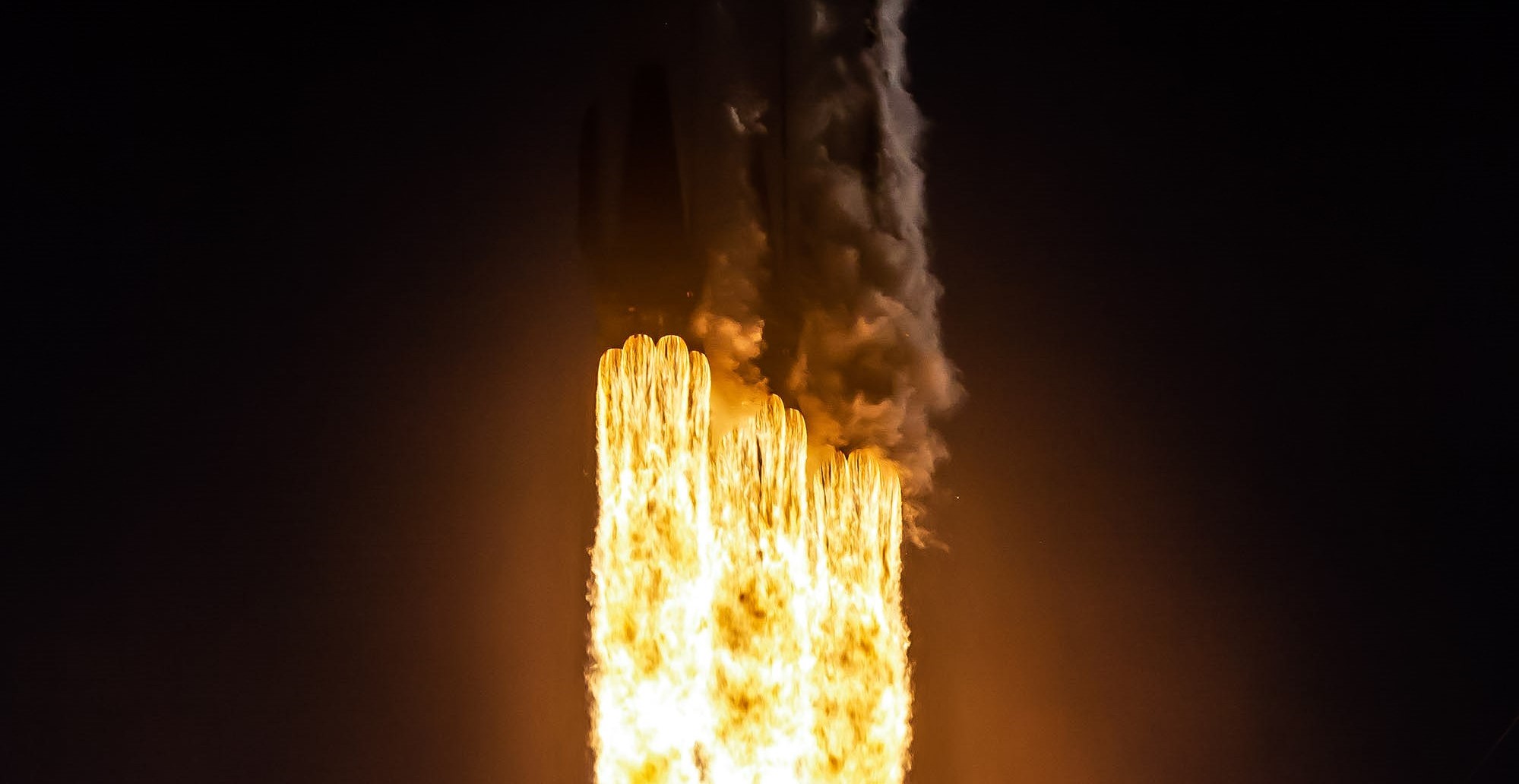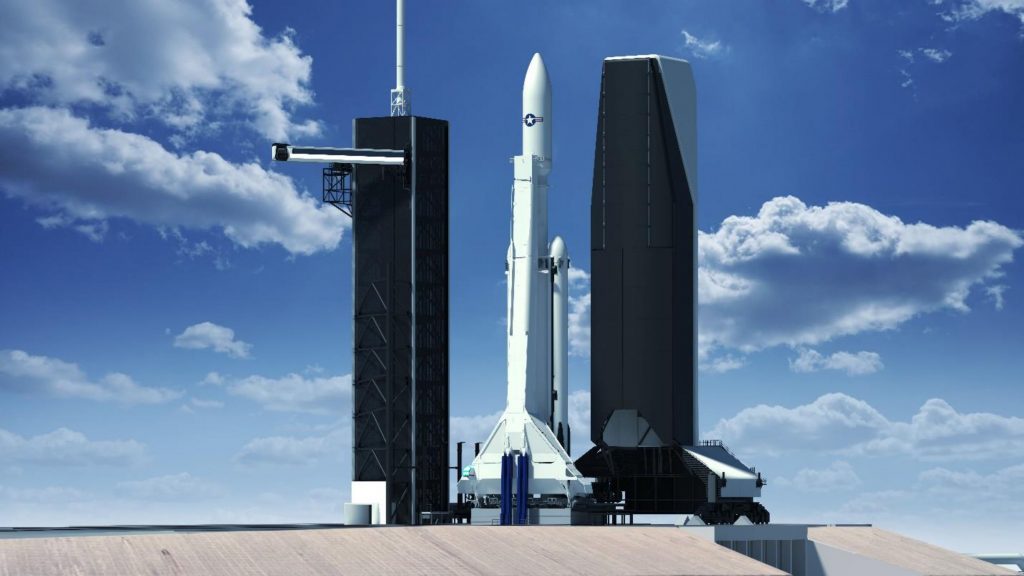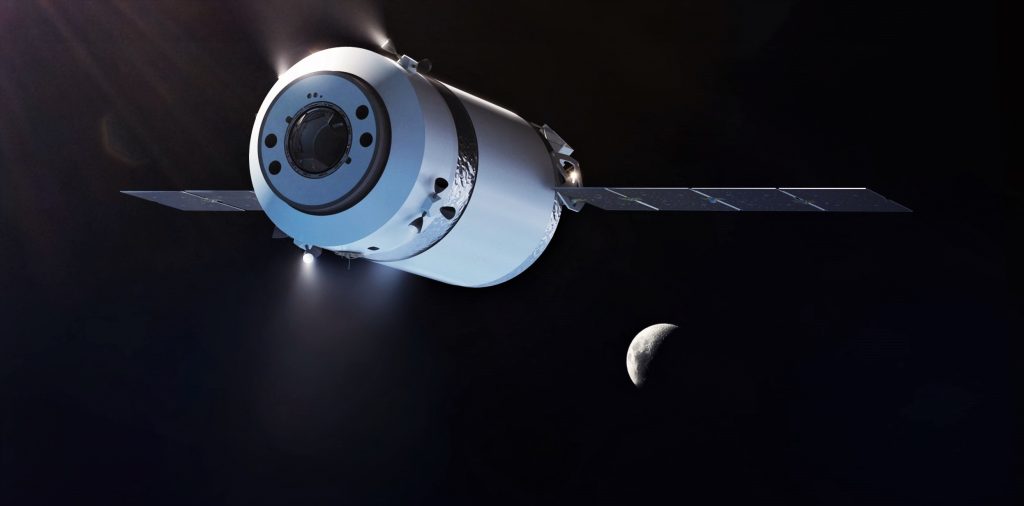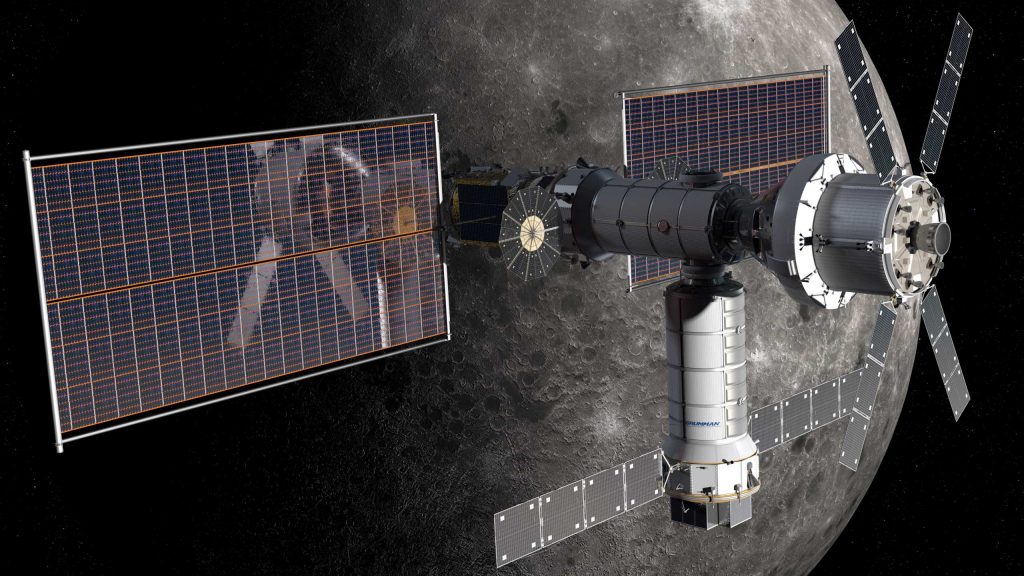

News
SpaceX’s Falcon Heavy rocket could launch a NASA space station to the Moon
According to NASA, a SpaceX Falcon Heavy rocket (or another commercial heavy-lift launch vehicle) could potentially launch the bulk of a new Moon-orbiting space station in a single go, saving money and reducing risk.
Known as the Gateway, NASA is working to build a tiny space station in an exotic and odd orbit around the Moon. Lacking any clear and pressing purpose, NASA and the Gateway’s proponents have argued that it could serve as a testbed for interplanetary missions, allowing the space agency to figure out how to keep astronauts alive and healthy in deep space. Later, it was proposed as a sort of unwieldy orbital tug and home base for crewed Moon landers, although the Gateway appears to have recently been removed from any plans for mid-2020s Moon landings.
Most likely, the station is being built in order to give NASA’s wildly over-budget, behind-schedule Orion spacecraft and SLS rocket some kind of destination worthy of their gobsmacking $2-3 billion launch cost and $35-40 billion development cost. Regardless, a space station orbiting the Moon – while lacking a clear and present scientific or exploratory reason for its existence – is undeniably cool and exciting and will indeed need to be launched into cislunar space. Previously planned to launch as separate modules that would then rendezvous and dock in at the Moon, NASA has recently decided to switch gears.

As of May 2020, NASA has awarded three critical hardware contracts for Gateway. In 2019, the space agency awarded contracts to Maxar and Northrop Grumman to build the Power and Propulsion Element (PPE) and Habitation and Logistics Outpost (HALO), respectively. As the name suggests, the PPE will feature an exceptionally large ~50 kW solar array and the most powerful electric thrusters ever flown in space, thus supplying Gateway with electricity and propulsion. HALO is a miniscule habitat module also responsible for life support and providing all other basic necessities for astronauts to live in space, all of which will leave a tiny amount of actual habitable volume for those astronauts to live in.
Most recently, NASA also awarded SpaceX a contract to develop a new Dragon XL spacecraft that will launch on Falcon Heavy and autonomously resupply the lunar space station at least twice, should Gateway actually make it to launch.


The notional plan is to eventually expand the habitable volume of the station from living in a large SUV to something more like a small studio apartment, a bit less than a third as large as the International Space Station (ISS) in a best-case scenario. The ISS is designed to support at least six astronauts simultaneously and has done so for almost two decades, albeit only with the help of resupply missions launched from Earth every 2-3 months. Indeed, the plan is to send up to four astronauts to the Gateway for no more than 90 days a year.
Two birds, one stone; two eggs, one basket
Originally, NASA wanted to launch the PPE and HALO modules – together representing the absolute bare minimum needed to build a functional Gateway – on separate commercial rockets in 2022 and 2023, respectively. Now, according to NASA associate administrator Doug Loverro, the space agency has made the decision to launch both modules simultaneously on the same commercial rocket.

This decision was made in large part because it makes sense from a technical simplicity and overall efficiency standpoint but also because several commercial launch vehicles – either currently operational or soon to be – are set to debut extremely large payload fairings. As a combined payload, the Gateway PPE and HALO modules would be too big for just about any existing launch vehicle, while the tiny handful it might fit in lack the performance needed to send such a heavy payload to the Moon.
Falcon Heavy apparently has the performance needed, as NASA used the rocket and a new stretched fairing developed by SpaceX for military customers as a baseline to determine whether PPE and HALO could launch together. Given that NASA could have technically used any of the vehicles expected to have large payload fairings for that analysis, the explicit use and mention of Falcon Heavy rather strongly suggests that the SpaceX rocket is a front runner for the new combined launch contract. This isn’t exactly surprising, given that the massive rocket has already completed three successful launches and will attempt at least another four missions between now and 2023.

Of the other launch vehicles expected to feature large fairings capable of supporting the combined PPE/HALO payload, ULA’s Vulcan Centaur rocket is scheduled to launch for the first time in July 2021, while Blue Origin’s New Glenn is unlikely to launch before late 2021. Northrop Grumman is also developing the Omega rocket with a large fairing, although it’s unlikely to have the performance needed for the unique Gateway payload. As such, by 2023, Falcon Heavy will almost certainly have a record of launches well out of reach of other prospective PPE/HALO launch competitors. For obvious reasons, putting both modules of a space station on a single launch raises the stakes, making it more critical than ever than risk be reduced where it can be – especially important for launch operations.
Notionally including Gateway’s PPE and HALO, Falcon Heavy now has as many as nine launches on contract (or nearly so) over the next five or so years. It’s extraordinarily unlikely that any of Falcon Heavy’s prospective competitors will be able to get close to the SpaceX rocket’s flight history by 2023, effectively making Falcon Heavy the de facto choice for NASA from an apolitical, technical perspective.

Elon Musk
Elon Musk and Tesla AI Director share insights after empty driver seat Robotaxi rides
The executives’ unoccupied tests hint at the rapid progress of Tesla’s unsupervised Robotaxi efforts.

Tesla CEO Elon Musk and AI Director Ashok Elluswamy celebrated Christmas Eve by sharing personal experiences with Robotaxi vehicles that had no safety monitor or occupant in the driver’s seat. Musk described the system’s “perfect driving” around Austin, while Elluswamy posted video from the back seat, calling it “an amazing experience.”
The executives’ unoccupied tests hint at the rapid progress of Tesla’s unsupervised Robotaxi efforts.
Elon and Ashok’s firsthand Robotaxi insights
Prior to Musk and the Tesla AI Director’s posts, sightings of unmanned Teslas navigating public roads were widely shared on social media. One such vehicle was spotted in Austin, Texas, which Elon Musk acknowleged by stating that “Testing is underway with no occupants in the car.”
Based on his Christmas Eve post, Musk seemed to have tested an unmanned Tesla himself. “A Tesla with no safety monitor in the car and me sitting in the passenger seat took me all around Austin on Sunday with perfect driving,” Musk wrote in his post.
Elluswamy responded with a 2-minute video showing himself in the rear of an unmanned Tesla. The video featured the vehicle’s empty front seats, as well as its smooth handling through real-world traffic. He captioned his video with the words, “It’s an amazing experience!”
Towards Unsupervised operations
During an xAI Hackathon earlier this month, Elon Musk mentioned that Tesla owed be removing Safety Monitors from its Robotaxis in Austin in just three weeks. “Unsupervised is pretty much solved at this point. So there will be Tesla Robotaxis operating in Austin with no one in them. Not even anyone in the passenger seat in about three weeks,” he said. Musk echoed similar estimates at the 2025 Annual Shareholder Meeting and the Q3 2025 earnings call.
Considering the insights that were posted Musk and Elluswamy, it does appear that Tesla is working hard towards operating its Robotaxis with no safety monitors. This is quite impressive considering that the service was launched just earlier this year.
Elon Musk
Starlink passes 9 million active customers just weeks after hitting 8 million
The milestone highlights the accelerating growth of Starlink, which has now been adding over 20,000 new users per day.

SpaceX’s Starlink satellite internet service has continued its rapid global expansion, surpassing 9 million active customers just weeks after crossing the 8 million mark.
The milestone highlights the accelerating growth of Starlink, which has now been adding over 20,000 new users per day.
9 million customers
In a post on X, SpaceX stated that Starlink now serves over 9 million active users across 155 countries, territories, and markets. The company reached 8 million customers in early November, meaning it added roughly 1 million subscribers in under seven weeks, or about 21,275 new users on average per day.
“Starlink is connecting more than 9M active customers with high-speed internet across 155 countries, territories, and many other markets,” Starlink wrote in a post on its official X account. SpaceX President Gwynne Shotwell also celebrated the milestone on X. “A huge thank you to all of our customers and congrats to the Starlink team for such an incredible product,” she wrote.
That growth rate reflects both rising demand for broadband in underserved regions and Starlink’s expanding satellite constellation, which now includes more than 9,000 low-Earth-orbit satellites designed to deliver high-speed, low-latency internet worldwide.
Starlink’s momentum
Starlink’s momentum has been building up. SpaceX reported 4.6 million Starlink customers in December 2024, followed by 7 million by August 2025, and 8 million customers in November. Independent data also suggests Starlink usage is rising sharply, with Cloudflare reporting that global web traffic from Starlink users more than doubled in 2025, as noted in an Insider report.
Starlink’s momentum is increasingly tied to SpaceX’s broader financial outlook. Elon Musk has said the satellite network is “by far” the company’s largest revenue driver, and reports suggest SpaceX may be positioning itself for an initial public offering as soon as next year, with valuations estimated as high as $1.5 trillion. Musk has also suggested in the past that Starlink could have its own IPO in the future.
News
NVIDIA Director of Robotics: Tesla FSD v14 is the first AI to pass the “Physical Turing Test”
After testing FSD v14, Fan stated that his experience with FSD felt magical at first, but it soon started to feel like a routine.

NVIDIA Director of Robotics Jim Fan has praised Tesla’s Full Self-Driving (Supervised) v14 as the first AI to pass what he described as a “Physical Turing Test.”
After testing FSD v14, Fan stated that his experience with FSD felt magical at first, but it soon started to feel like a routine. And just like smartphones today, removing it now would “actively hurt.”
Jim Fan’s hands-on FSD v14 impressions
Fan, a leading researcher in embodied AI who is currently solving Physical AI at NVIDIA and spearheading the company’s Project GR00T initiative, noted that he actually was late to the Tesla game. He was, however, one of the first to try out FSD v14.
“I was very late to own a Tesla but among the earliest to try out FSD v14. It’s perhaps the first time I experience an AI that passes the Physical Turing Test: after a long day at work, you press a button, lay back, and couldn’t tell if a neural net or a human drove you home,” Fan wrote in a post on X.
Fan added: “Despite knowing exactly how robot learning works, I still find it magical watching the steering wheel turn by itself. First it feels surreal, next it becomes routine. Then, like the smartphone, taking it away actively hurts. This is how humanity gets rewired and glued to god-like technologies.”
The Physical Turing Test
The original Turing Test was conceived by Alan Turing in 1950, and it was aimed at determining if a machine could exhibit behavior that is equivalent to or indistinguishable from a human. By focusing on text-based conversations, the original Turing Test set a high bar for natural language processing and machine learning.
This test has been passed by today’s large language models. However, the capability to converse in a humanlike manner is a completely different challenge from performing real-world problem-solving or physical interactions. Thus, Fan introduced the Physical Turing Test, which challenges AI systems to demonstrate intelligence through physical actions.
Based on Fan’s comments, Tesla has demonstrated these intelligent physical actions with FSD v14. Elon Musk agreed with the NVIDIA executive, stating in a post on X that with FSD v14, “you can sense the sentience maturing.” Musk also praised Tesla AI, calling it the best “real-world AI” today.








